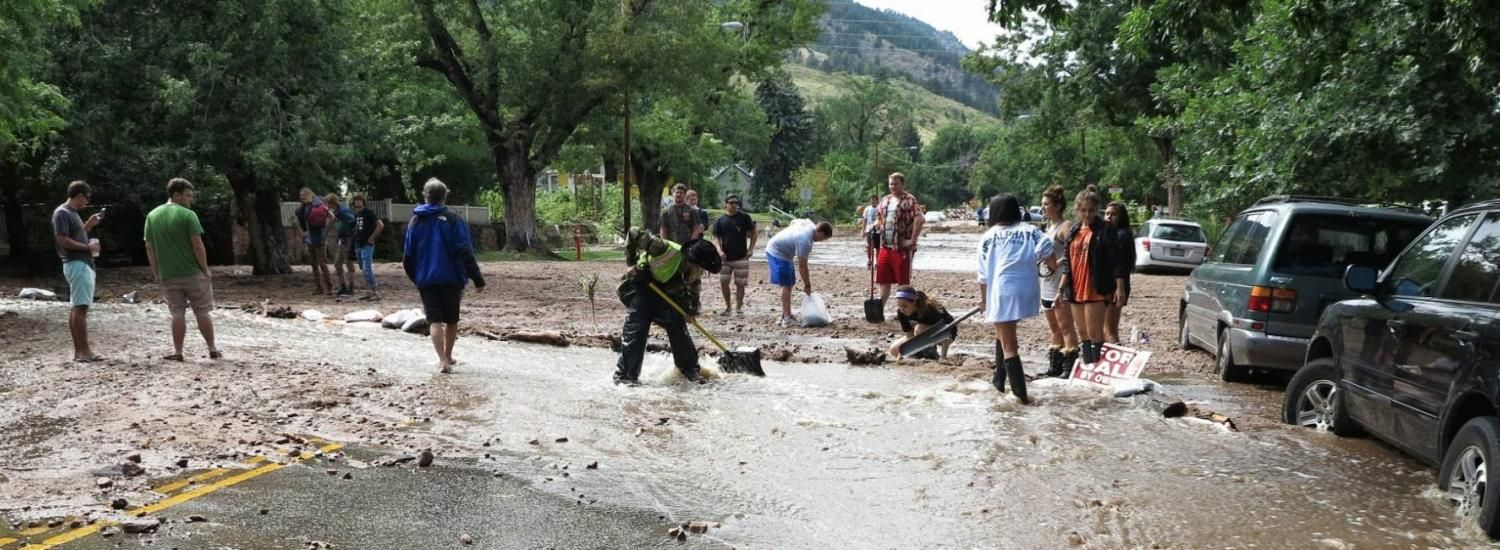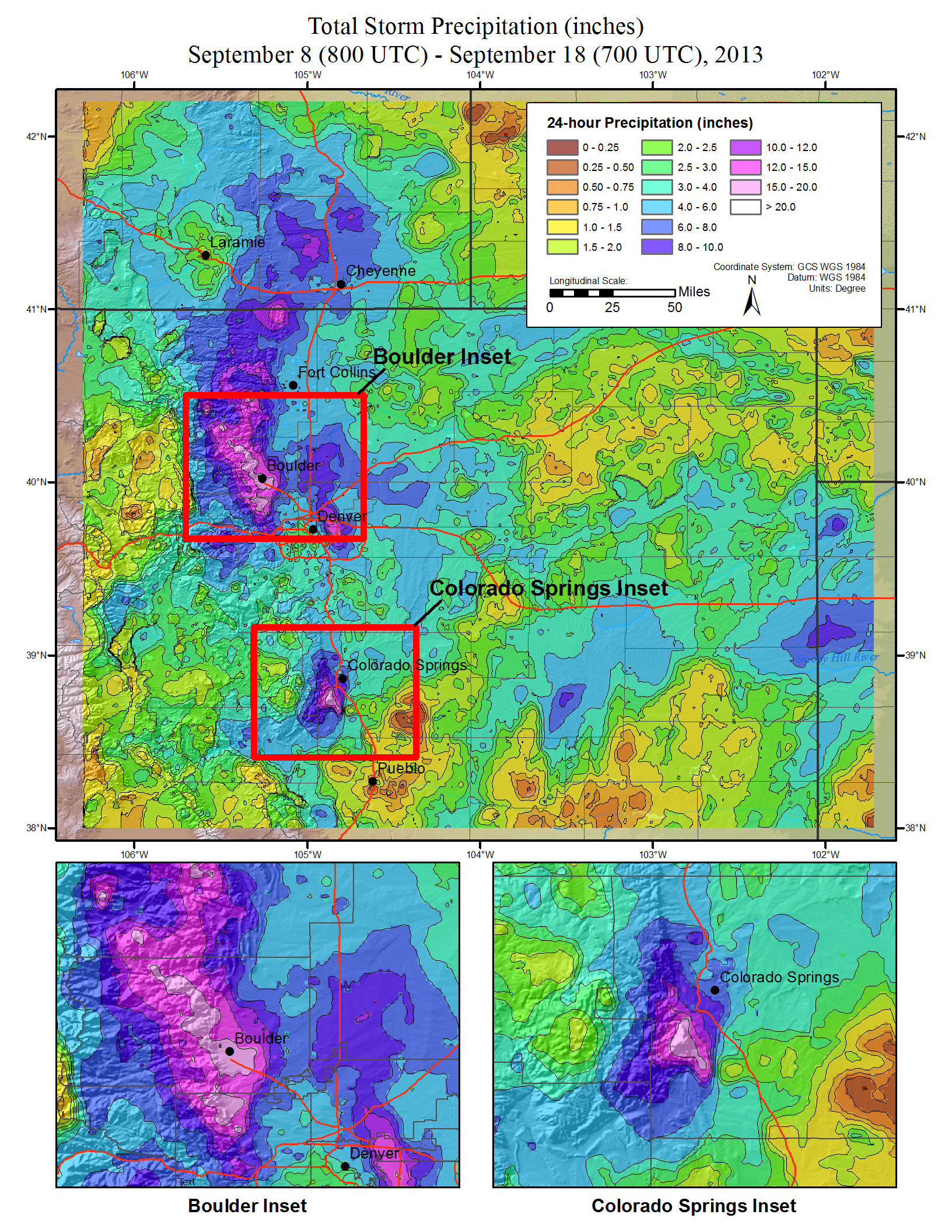Climate Change Not To Blame For 2013 Colorado Floods
NOAA-led study says September 2013 floods not due to climate change

Last September’s widespread flooding in northeast Colorado, which saw just over 17 inches of rain in one week in the city of Boulder, was not made more likely or more intense by the effects of human-induced climate change, according to a new NOAA-led study published today in the Bulletin of the American Meteorological Society.
"There’s clear evidence that overall, our greenhouse gas emissions are making the planet warmer and moister, but we found such climate factors had little appreciable effect on the frequency of heavy 5-day rainfall events in this area during September," said Martin Hoerling, a research meteorologist at NOAA’s Earth System Research Laboratories in Boulder, Colorado, and lead author of the new study, which also included researchers from the Cooperative Institute for Research in Environmental Sciences (CIRES) and NASA. In fact, the study suggests that in this region, the likelihood of heavy rainfall events may have slightly decreased because of human-induced climate change.

2013 COLORADO FLOODS - TOTAL STORM PRECIPITATION FOR THE REGION. MAP CREATED WITH STORM PRECIPITATION ANALYSIS SOFTWARE (SPAS) THROUGH A COLLABORATIVE EFFORT BY APPLIED WEATHER ASSOCIATES, LLC, METSTAT, INC. AND THE COLORADO CLIMATE CENTER.
Last summer’s extreme rainfall—17 inches is close to the city’s typical total for the entire year—was very unusual, but it wasn’t the first time Colorado experienced such heavy rains. Widespread flooding rains fell over the Front Range during several days in September 1938, before human-caused climate change was detectable. The two events were similar in many ways: they happened over a large area, lasted a long time, and were characterized by a slow-moving weather system that pulled lots of moisture into the region.
To tease out the impact of climate change on the 2013 floods, Hoerling and his colleagues used a climate model, developed by NASA, that contained detailed information on how various climate factors—such as greenhouse gas levels, ocean temperatures, and sea ice extent—have varied since the late 19th Century. Run many times, the model produced occasional heavy September rain events both at the end of the 19th Century (1870-1900) and in a recent 30-year period (1983-2012). Comparing those two time periods, the researchers found that the extra greenhouse gases, warmer oceans and lower amounts of sea ice of recent decades did not increase the likelihood of rains as heavy as those in September 2013.
The researchers also explored what the future may hold for such rain events in this area, as greenhouse gases continue to rise. The team examined climate projections used in the Intergovernmental Panel on Climate Change (IPCC) assessments and found no significant changes in the risk of summer heavy 5-day rainfall events over the High Plains region, including Colorado.
Hoerling and colleagues stressed, however, that with further increases in water vapor in a warmer world, many parts of the world are likely to see more frequent episodes of very heavy rains. They said that what happens globally doesn’t necessarily explain what happens in one particular place, where local to regional processes may trump global ones. To figure out why that is, the researchers are doing further studies with other models.
This study is part of a Bulletin of the American Meteorological Society special report on 2013 extreme weather events.If climate change didn’t cause the 2013 floods, then what did? “For this event, the weather pattern was much more important than climate change, or other climate factors such as ocean temperature variations and changes in Arctic sea ice,” Hoerling said. In this case, a slow-moving low pressure system pulled up moisture from the south and essentially stalled at the Front Range, dropping that moisture as heavy rains.
Authors of "Northeast Colorado Extreme Rains Interpreted in a Climate Change Context" include Martin Hoerling and Randall Dole from NOAA’s Earth System Research Laboratories; Klaus Wolter, Judith Perlwitz, Xiaowei Quan, Jon Eischeid, and Henry Diaz from CIRES; and Hailan Wang and Siegfried Schubert from NASA’s Goddard Space Flight Center.